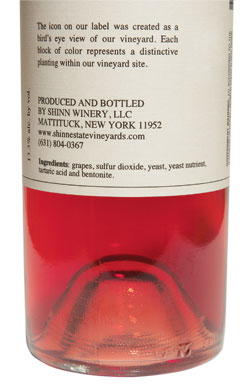
The popular romantic notion of winemaking involves grapes, barrels, and time. Of course, there’s much more to it: There’s chemistry, microbiology, and any number of additives used for punching up the acid, smoothing out the rough edges, tweaking flavors, deepening the hue, and otherwise meeting consumer expectations. This discrepancy between public perception and cellar reality has sparked a debate in the winemaking community, and inspired a very few bold, convention-bucking vintners to do the unthinkable: voluntarily list ingredients on their labels. (Wine falls under the jurisdiction of the Treasury Department’s Alcohol and Tobacco Tax and Trade Bureau, not the FDA, and listing every ingredient has never been required by law.) Bonny Doon’s iconoclastic Randall Grahm made news four years ago when he began citing not only tartaric acid but also substances used to process the wine (indigenous yeast for fermentation; bentonite, a clarifying clay) but gone by the time it’s bottled. Shinn Estate Vineyards followed suit with its North Fork estate-bottled wines, and the Anderson Valley winery Foursight printed its first ingredient list last summer.
Reaction is mixed. “Our goal is to make wines comprised of grapes and nothing else,” says Shinn Estate’s David Page. Advocates believe full label disclosure will encourage noninterventionist, “natural” winemaking. But there’s risk attached to laundry lists of unfamiliar terms. Would the average drinker be glad to know his wine was clarified with isinglass, a fish-bladder extract, or its alcohol level boosted with beet sugar? “To have a long list makes it look like antifreeze,” says David Lillie, co-owner of Chambers Street Wines, who likes the idea less in practice than in theory. Red Hook Winery founder Mark Snyder concurs. As to whether he’d consider listing ingredients on his bottles, “I’d rather add a paragraph explaining what it all means.” And for Paul Grieco, co-owner of Hearth and Terroir, what matters most is the potential effect on the wine-drinking public. “If it’s going to scare people off, then I’m scared shitless of it.”
It seems, though, that in this insatiable information age, we might be headed in that direction. Is the romance of wine a thing of the past? “I remember similar questions about cork versus screwcaps,” says Scott Pactor, owner of Appellation Wine & Spirits. “As long as someone enjoys what they’re drinking, the romance will still be there.”